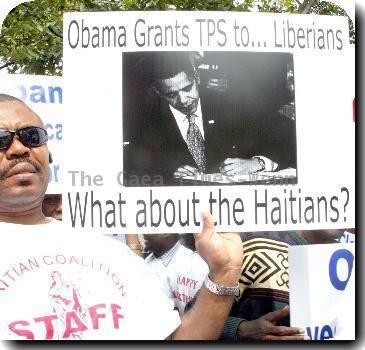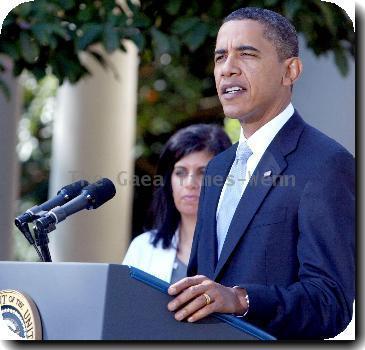BP exec says he knows people are frustrated over oil spill, company is doing all it can
By Matthew Brown, APTuesday, May 25, 2010
BP exec acknowledges public frustration over spill
BARATARIA BAY, La. — The BP executive in charge of fighting the Gulf of Mexico oil spill said Monday his company knows people are frustrated by its failure to plug the well that has been gushing for more than a month and is now spreading damage through Louisiana’s wetlands.
“Everyone is very, very frustrated about why we haven’t been able to bring this well to stop flowing so far,” said Doug Suttles, chief operating officer of BP PLC, but he insisted the oil giant has the necessary resources to stop the growing spill.
Millions of gallons of oil have already spewed from the well that blew out after a drilling rig exploded April 20 off the Louisiana coast.
Suttles said it will be at least Wednesday before BP will try using heavy mud and cement to plug the leak, a maneuver called a top kill that represents the best hope of stopping the oil after several failed attempts. BP initially said it would try Tuesday, but company spokesman John Curry said more time is needed to get equipment in place and test it.
“Our goal, of course, is to succeed,” Curry said. “We want this as much as anyone and our best chance of success is looking like Wednesday morning.”
Several officials from President Barack Obama’s administration led a delegation of U.S. senators who surveyed the affected areas from the air Monday, then held a press conference to emphasize that the cleanup is BP’s responsibility.
“We are going to stay on this and stay on BP until this gets done and it gets done the right way,” said Homeland Security Secretary Janet Napolitano.
Engineers are working on several backup plans in case the top kill doesn’t work. Suttles said they will likely try to cap the well with a small containment dome if the maneuver fails. He said they are also considering injecting assorted junk into the well to stop the oil.
BP said Monday its costs for the spill had grown to about $760 million, including containment efforts, drilling a relief well to stop the leak permanently, grants to Gulf states for their response costs, and payment of damage claims. BP said it’s too early to calculate other potential costs and liabilities.
At least 6 million gallons of crude have spewed into the Gulf, according to a Coast Guard and BP estimate of how much is coming out, though some scientists say they believe the spill has already surpassed the 11 million-gallon 1989 Exxon Valdez oil spill off Alaska as the worst in U.S. history.
A federal task force of scientists is now working to try to get a better idea how much oil is gushing from the well, and it could release data this week.
A mile-long tube operating for about a week has siphoned off more than half a million gallons, but it began sucking up oil at a slower rate over the weekend, and even at its best it wasn’t capturing all of what is leaking.
The spill’s impact on shore now stretches across 150 miles, from Dauphin Island, Ala. to Grand Isle, La.
With oil pushing at least 12 miles into marshes in his state and two major pelican rookeries coated in crude, Louisiana Gov. Bobby Jindal said crews have begun work on a chain of berms made with sandbags, reinforced with containment booms, that would skirt the state’s coastline.
“This oil threatens not only our coast and our wetlands, this oil fundamentally threatens our way of life in southeastern Louisiana,” he said at Monday’s press conference.
On Barataria Bay, some brown pelicans coated in oil could do little more than hobble. Their usually brown and white feathers were jet black, and eggs were glazed with rust-colored gunk.
The birds got spooked when wildlife officials tried to rescue one, and officials were not sure they would try again.
Pelicans are especially vulnerable to oil because they dive into the water to feed. They could eat tainted fish and feed it to their young, or they could die of hypothermia or drown if their feathers become soaked in oil. The birds were removed from the federal endangered species list just six months ago.
Oil has also reached a 1,150-acre oyster ground leased by Belle Chasse, La., fisherman Dave Cvitanovich. He said cleanup crews were stringing lines of absorbent boom along the surrounding marshes, but that still left large clumps of rust-colored oil floating over his oyster beds. Mature oysters might eventually filter out the crude and become fit for sale, but this year’s crop of young oysters will perish.
“Those will die in the oil,” Cvitanovich said. “It’s inevitable.”
Officials said last week that 264 birds, sea turtles and dolphins had been found dead or stranded on shore that may have been affected by the spill, though Roger Helm, chief of the U.S. Fish and Wildlife Service’s contaminants division, said the death toll is certain to rise as the oil moves deeper into the marshes. In contrast, hundreds of thousands of birds, otters and other animals were killed after the Exxon Valdez spill in 1989.
Helm said the biggest reason for the relatively low death toll from the Gulf spill is that until recently, most of the oil remained far out to sea.
“But if the oil does really start fouling up the marshes, you can expect the numbers of oiled birds to go up significantly,” he said.
Meanwhile, BP was still using a contentious chemical dispersant Monday to fight the oil, despite orders from federal regulators to use something less toxic. Suttles said the oil giant is still researching other dispersants but has yet to find one that is both less toxic and readily available.
“If we can find an alternative that is less toxic and available, we will switch to that product,” he said. “To date, we’ve struggled to find an alternative either that had less risk to the environment or that was readily available.”
The EPA raised concerns on Thursday about the dispersant at issue, Corexit 9500, saying the long-term effects remain unknown.
Bluestein reported from Covington, La. Associated Press writers Mary Foster and Kevin McGill in Louisiana, Matthew Daly in Washington, and John Flesher in Michigan and Associated Press photographer Gerald Herbert in Louisiana contributed to this report.
Online:
globalwarming.house.gov/spillcam
Tags: Accidents, Animals, Barack Obama, Barataria Bay, Birds, Coastlines And Beaches, Energy, Environmental Concerns, Louisiana, Natural Resource Management, North America, Oil spill, United States, Wildlife



